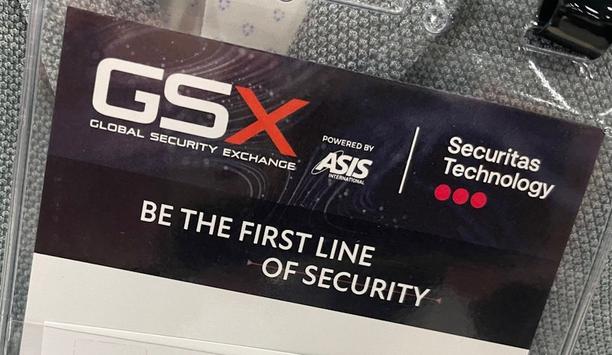Most of us think of shrinkage in the context of the retail environment, where a host of video cameras, tamper-proof packaging, sensors and other technologies help control theft by customers and employees.
However, the term shrinkage also applies to goods before they get to a retail store. Goods can be stolen at any stage of their manufacture and distribution, usually by employees, and there are fewer technology solutions geared toward theft along the supply chain. In fact, some distribution centres, even those operated by major players in the business, have no technology at the exits to screen employees and detect theft. Loss prevention personnel have to rely on their ability to detect “lumps and bumps” as the only deterrent.
Detection of infrared (IR) heat signatures
Providing a technology solution for this market is ISCON Imaging, which applies detection of infrared (IR) heat signatures to address the problem of shrinkage in manufacture and distribution centres. The technology, which comes in the form of a full body scanner or a handheld device (about the size of a metal detector), senses the temperature of an employee’s clothing and highlights any difference in temperature that might be caused by an object – such as a stolen cell phone – hidden under clothing.
Because the system only detects the surface of clothing, there are no privacy issues. The system also uses a low-velocity heated airflow that destabilises temperatures and makes objects more visible (even if they have been hidden long enough for their temperature to be “normalised.”)
"It’s a greenfield market, and a great fit for our technology, given the challenges and benefits an employee screening situation entails" |
The IR camera creates a high-resolution black-and-white image, which is transmitted to a fully automated screen that allows operators to zoom in and out (using their fingers, as with an iPhone), to add a time and date stamp, to tie the image to an employee’s ID card, and/or to save it for possible prosecution.
It’s a novel application of IR detection technology, which is mostly used at a distance to determine the heat signatures of bad guys hiding in the jungle, for example.
Refocus on B-to-B sales to distribution centres
Begun as a startup in the aviation market, ISCON Imaging found it difficult to compete against large manufacturers selling to the government (TSA), and the technology is not as well suited to really high-volume screening like at airports. In the last couple of years, the company has been refocusing on B-to-B sales to distribution centres, which have needed such a solution to address their shrinkage problems. “It’s a greenfield market, and a great fit for our technology, given the challenges and benefits an employee screening situation entails,” says Bill Gately, ISCON Imaging's CEO. “I’m a big believer in focus, and we will focus on this before we get into other markets.”
Because technology is new to the market, ISCON Imaging often helps end user customers implement their concepts of operation. “We do a lot to help them with equipment layout,” says Gately. Currently, the company targets the hundreds of large distribution centres in the United States – and the many more that are coming online in our age of Internet commerce.
A differentiating factor of the technology is that it can identify the object being hidden. In contrast, a metal detector with a light and/or audible alarm only detects if an object is present – yes or no, but no additional information about what the object is. (The object also has to be metal; it can’t detect clothing, pharmaceuticals, and other items likely to be stolen.)
Also, some other scanning technologies only show a “square” indicating a foreign object, rather than an actual image of the object. With little information to work with, loss prevention personnel either have to interrogate the offender or get them to agree to be searched.
In addition to uses at entrance/exits, the hand-held units can be used to perform random security checks, for instance in a high-theft or high-value area of a distribution centre.
“The reason we don’t have any health issues is that the camera is passive – it just looks at the heat your body is generating,” says Gately. “The only thing coming from the machine to you is hot air.”
The system is so precise that it can detect even small objects like thumb drives and SIM cards that metal detectors cannot find.
Employee safety
"ISCON Imaging is “being dragged into” the workplace safety market because of the urgent need for screening technologies" |
The ISCON Imaging system also contributes to employee safety. Employees are screened when they come to work each day (to ensure they aren’t bringing weapons into the workplace, for instance), and again when they leave at the end of the day (to detect any stolen objects). If a weapon is detected, an operator can escalate a silent alarm to respond to the situation with a lockdown or other strategy.
In fact, the radiation-free and non-intrusive personnel inspection system can help prevent workplace violence, an issue that can lead to liability lawsuits for employers. “Most companies aren’t screening employees on the way in,” says Gately. “That’s an area I think will drive this whole security movement very quickly.” Proliferation of active shooter drills, for example, is raising awareness among top management of the possible liability consequences of failing to prevent workplace violence. For instance, U.S. Security Associates recently paid a $46 judgment for failure to protect two Kraft employees who were shot and killed at work.
Gately says “ISCON Imaging is “being dragged into” the workplace safety market because of the urgent need for screening technologies.”
Find out the state of adoption, trends and opportunities with Artificial Intelligence (AI) in physical security.















































